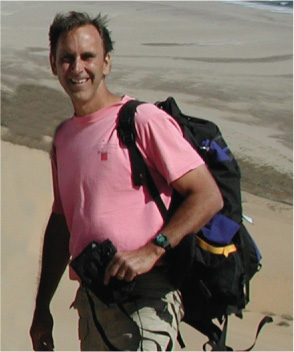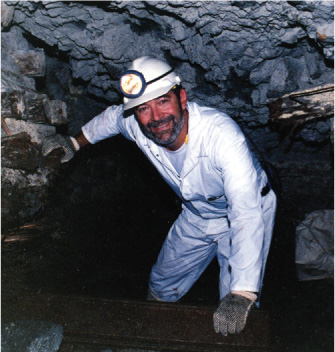Meet the Authors

John Grotzinger is a field geologist interested in the evolution of Earth’s surface environments and biosphere. He also works on the early environmental evolution of Mars and on assessing its potential habitability. His research addresses the chemical development of the early oceans and atmosphere, the environmental context of early animal evolution, and the geologic factors that regulate sedimentary basins. His fieldwork has taken him to northwestern Canada, northern Siberia, southern Africa, the western United States, and via robot, to Mars. He received a B.S. in geoscience from Hobart College in 1979, an M.S. in geology from the University of Montana in 1981, and a Ph.D. in geology from Virginia Polytechnic Institute and State University in 1985. He spent three years as a research scientist at the Lamont-Doherty Geological Observatory before joining the MIT faculty in 1988. From 1979 to 1990, he was engaged in regional mapping for the Geological Survey of Canada. He currently works as the Chief Scientist for the Mars Curiosity Rover team, the first mission to assess the habitability of the ancient environments of another planet.
In 1998, Dr. Grotzinger was named the Waldemar Lindgren Distinguished Scholar at MIT, and in 2000, he became the Robert R. Shrock Professor of Earth and Planetary Sciences. In 2005, he moved from MIT to Caltech, where he is the Fletcher Jones Professor of Geology. He received the Presidential Young Investigator Award of the National Science Foundation in 1990, the Donath Medal of the Geological Society of America in 1992, the Charles Doolittle Walcott Medal of the National Academy of Sciences in 2007, and NASA’s Outstanding Public Leadership Medal in 2013. He is a member of the American Academy of Arts and Sciences and the U.S. National Academy of Sciences.

Tom Jordan is a geophysicist interested in the composition, dynamics, and evolution of the solid Earth. He has conducted research into the nature of deep subduction, the formation of thickened keels beneath ancient continental cratons, and the question of mantle stratification. He has developed a number of seismological techniques for investigating Earth’s interior that bear on geodynamic problems. He has also worked on modeling plate movements, measuring tectonic deformation, quantifying seafloor morphology, and characterizing large earthquakes. He received his Ph.D. in geophysics and applied mathematics at the California Institute of Technology (Caltech) in 1972 and taught at Princeton University and the Scripps Institution of Oceanography before joining the Massachusetts Institute of Technology (MIT) faculty as the Robert R. Shrock Professor of Earth and Planetary Sciences in 1984. He served as the head of MIT’s Department of Earth, Atmospheric and Planetary Sciences for the decade 1988–1998. He moved from MIT to the University of Southern California (USC) in 2000, where he is University Professor and W. M. Keck Professor of Earth Sciences. He is currently the director of the Southern California Earthquake Center, where he coordinates an international research program in earthquake system science that involves over 600 scientists at more than 60 universities and research organizations.
Dr. Jordan received the Macelwane Medal of the American Geophysical Union in 1983, the Woollard Award of the Geological Society of America in 1998, and the Lehmann Medal of the American Geophysical Union in 2005. He is a member of the American Academy of Arts and Sciences, the U.S. National Academy of Sciences, and the American Philosophical Society.
680
681